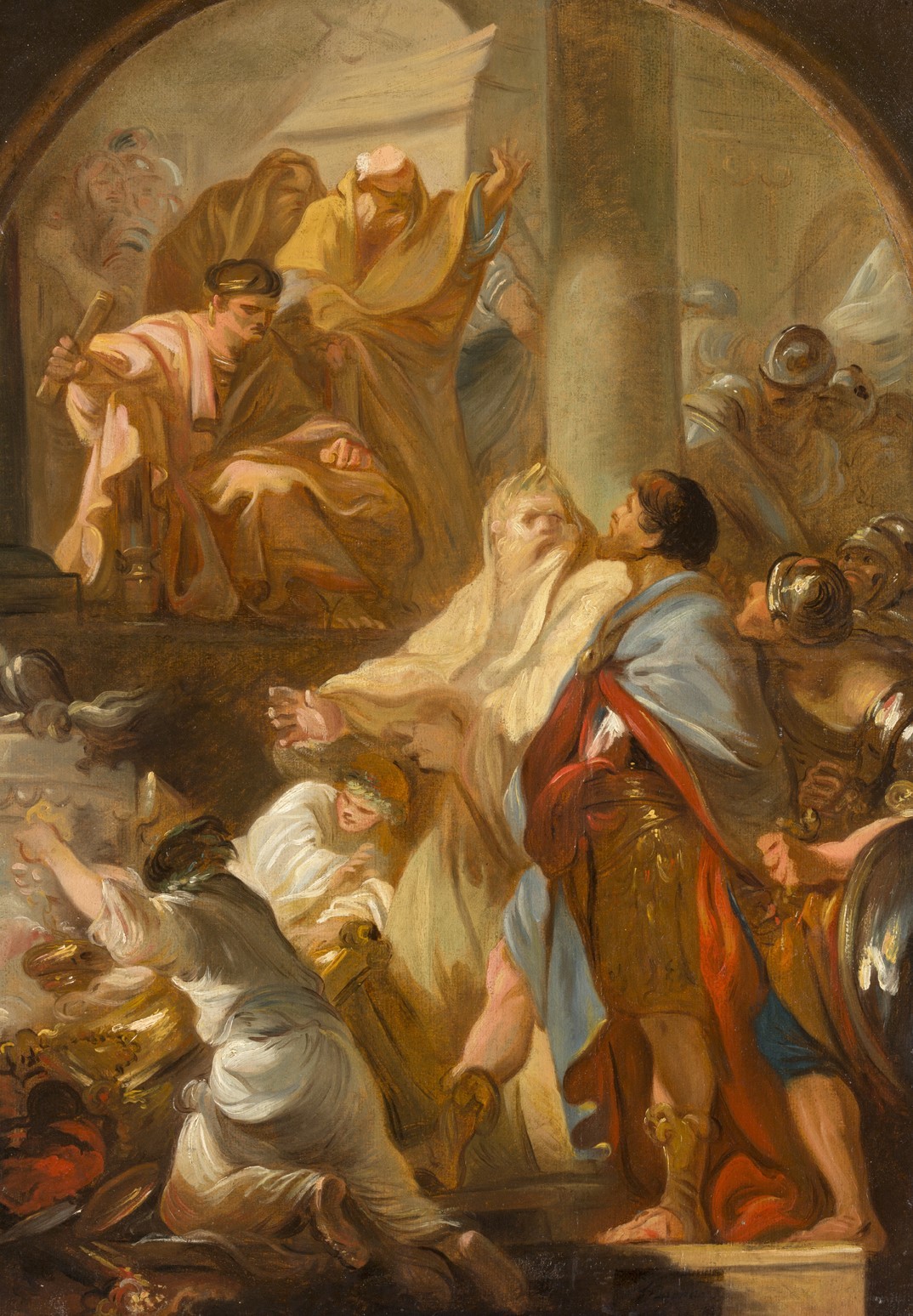
Saint-Victor renversant l’autel des faux dieux (Saint Victor Knocking Down False Idols)
Jean-Baptiste Deshays (1729–1765)
Paris, probably 1760
Oil on canvas
Jean-Baptiste Deshays won the Grand Prix de Rome in 1751 and trained at the École royale des élèves protégés before leaving for Rome in 1754. On his return to France in 1758, he was admitted to the Académie royale, where he was accepted as a history painter in 1759, the year that marked the start of his official career, following his acclaimed entry to the Salon.
Deshays was one of Diderot’s favourite artists: “I could not wait to get to Deshays. This painter – my friend – is in my opinion the nation’s greatest painter […]” This work was a sketch for a large and now destroyed painting presented at the Salon of 1761. Commenting on the painting, Diderot wrote: “The figures are so well-distributed, characterised and draped! How simple and grandiose everything is! What awful but beautiful poetry! […]”.
These lines point to Diderot’s intellectual and aesthetic priorities in his art criticism. They tell us what he essentially looked for in art: a painting that expressed the “passions”, figures that conveyed powerful emotions (“simple and grandiose”) and a sense of drama (“He imagines striking things”), a felicitous composition, great powers of imagination, and the presence of historical and literary references (to Corneille in this case).